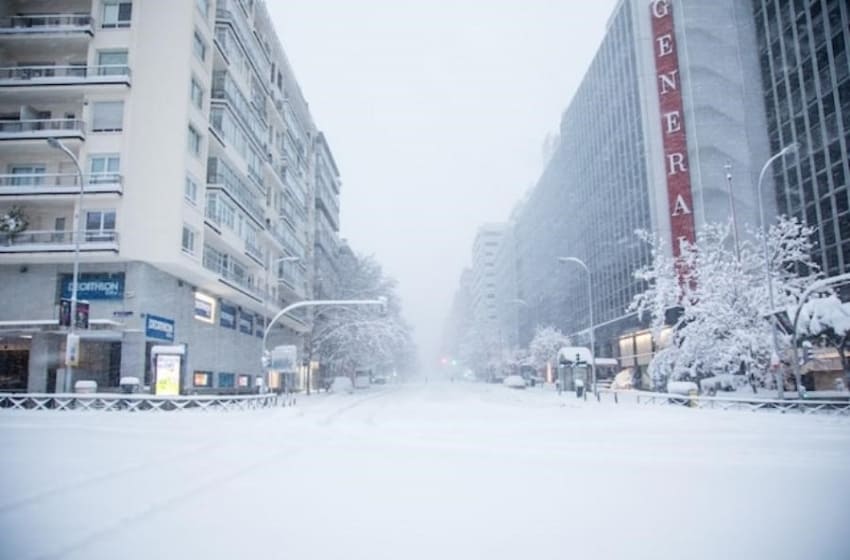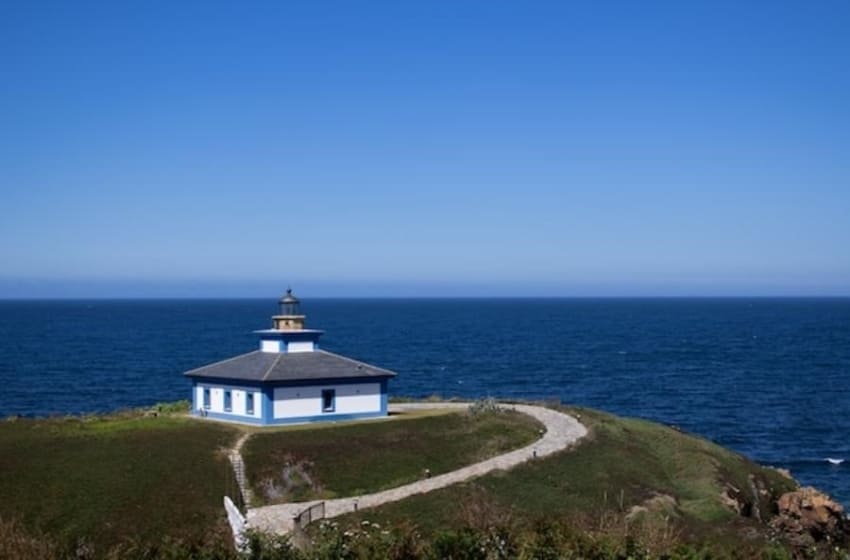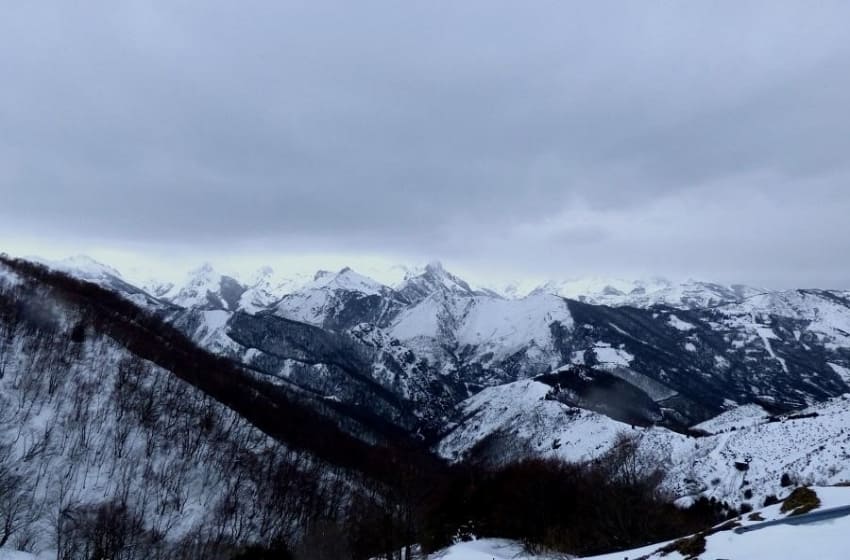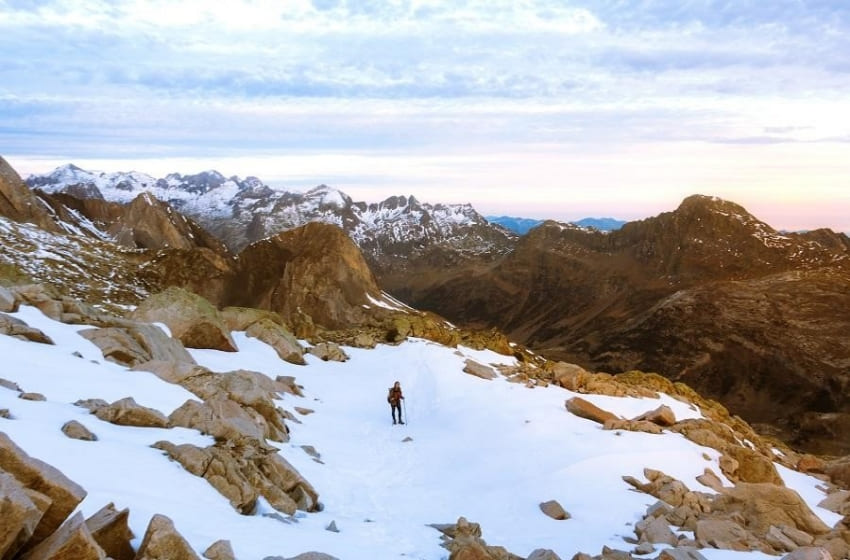
Most cities in Spain experience extreme sunlight all year around. As one of the sunniest European countries, it gets an average of 3,000 hours of daylight per year. Knowing this, many people typically wonder if it snows in Spain. And the answer is yes, it does, with the country getting around 840 hours of snow yearly. The intensity and longevity of the snow depends on the region you’re in. For example, the Sierra Nevada, Pyrenees, and other mountainous ranges get the most snow, while the northern cities and interior regions get less.
For instance, whereas Burgos city in the Pyrenees mountains gets 30 days of snow, Madrid, Spain’s central and most populous city, receives only 3.6 days. Snow volume varies year-in-year-out. For instance, Spain experienced a record-breaking snowfall in 2021 caused by Storm Filomena, which led to widespread property damage, fatalities, and disruption. In today’s post, I’ll fill you in on everything you need to know to better understand snowing in Spain.
When Do You Expect Snow to Fall in Spain?
Are you intending to tour Spain’s beautiful attractions, or are you a resident wanting to keep track of weather changes? Regardless of the case, snow can cut short beautiful, adventurous moments or make it impossible to get outdoors. As such, you must prepare accordingly to know when snow falls in Spain.
Snowfall timing in Spain depends on two main factors — altitude and region. Maximum snowfalls happen between December and February. In northern parts, you should expect snow to start in November and dissipate in late March or early April. The ski season in the country’s northern areas lasts between December and April.
In the central plateau and Madrid, snow falls between December and February. It’s normal not to expect much snow in these areas since it tends to be sporadic. In the Sierra Nevada, a southern Spanish region, snowfall happens between late November and April. Snowfall in this region lasts longer, making it your must-visit destination for winter sports and snowballing experiences.
The southern and eastern regions rarely get snow, and the little amount you can witness happens in the higher elevated areas of the mountains. Despite snowfall being uncommon, it only lasts a few days each year. If you live or plan to visit the Balearic or Canary Islands, then worry not because these areas rarely get snow. And if they get it, it’s only a couple of days during winter. 
How Much Snow Do You Expect in Spain?
Although Spain doesn’t get that much snow compared to other countries, being prepared for it is still paramount. If you are lodging in a rental home in the northern mountainous parts of Spain in winter, you better prepare to deal with an average of 3 meters of snow. Expect more snow in the Pyrenees, as it can extend beyond 5 meters. In the Cantabrian Mountains, snowfall ranges between 1 and 3 meters.
The central plateau and Madrid regions don’t get much snow; the highest amount received during peak seasons falls between 30 and 40 centimeters. For anyone in the Sierra Nevada in southern parts of Spain, expect substantial snowfall amounts, especially during the peak season. In a typical winter, you can get over 6 meters of snow.
Finally, snow in the eastern region tends to be very limited, with anything higher than 10 centimeters being almost impossible. As such, you won’t need to prepare much in the Canary and Balearic Islands because the snow amounts in these regions are negligible.
Why Does Spain Experience Snow?
If you were still wondering, “Does it snow in Spain”? Now you know. However, several meteorological aspects influence why the country gets this type of weather. Below, I’ll touch on those to help you understand how they affect the amount of snow.
Geography and Elevation
The leading reason for snowfall in Spain is its geographical location. This country has multiple elevations, from low-lying coastal to high mountainous regions. Scientific studies demonstrate snow falling more frequently in highly elevated areas. And as I said before, Spain’s mountainous regions are the ones that get more snow. These are mostly the Sierra Nevada, Pyrenees, and the Cantabrian Mountains. Highly elevated areas experience colder temperatures, a well-known recipe for snow formation.
Cold, moist air flows from the Atlantic Ocean via the Cantabrian Mountains, which is one of the reasons the area gets frequent snowfalls in winter. The central Spanish regions sit afar from the coast but at higher elevations, meaning they get drier and colder air, increasing snowfall odds.
Latitude
Latitude does affect snowfall frequency and intensity in Spain. Regions in the north half of Spain, including Catalonia, Galicia, Navarre, Pyrenees, Cantabria, Asturias, Basque Country, and Aragon, sit at a latitude of 40 degrees north. Areas seated in the northern province of Lugo have the highest latitude, mostly 43 degrees north.
All the regions I mentioned above sit in the northern areas far from the equator and experience lower temperatures and higher snowfall. When touring Spain and engaging in winter activities such as snowboarding and skiing, you should consider any of the northern areas I recommended above.
Oceanic Influence
A factor substantially affecting snowfall in Spain is oceanic influence. Areas sitting close and along the Atlantic Ocean are more likely to receive snow throughout the year. The Atlantic Ocean brings cold moisture and air to the mountainous regions, increasing the potential for snowfall. Although the Mediterranean Sea is drier and warmer, it also introduces cold air to some areas in Spain during winter.
Regions north of the Pyrenees receive higher precipitation than those in the south. This rain is highly likely to fall during the winter as snow, which is why areas close to the Atlantic Ocean tend to get this weather.
The Sierra Nevada Effect
As much as I know about the Sierra Nevada effect, it’s not always easy to explain to others. It is a dynamic weather phenomenon triggered by the impasse of the moisture-laden air ignited by the Mediterranean Sea that only happens close to the Sierra Nevada mountain range. It occurs in winter when the Mediterranean Sea is warmer than the mountains.
In other words, when you’re touring regions in Spain sitting close to these mountains, you might witness snowfall more frequently when the storm system from the Mediterranean Sea gets blocked by the Sierra Nevada mountain. This phenomenon occurs because when the storm system is blocked, the air within it rises, cools, and condenses, forming precipitation and clouds. These fall as snow in the northern regions of the Sierra Nevada.
Does It Ever Snow in Barcelona, Spain?
So, does it snow in Barcelona, Spain? Yes, it does, but rarely and slightly — only 0.4 days annually for about 33mm. The snow in Barcelona is mostly a light dusting that liquefies fast. However, you have probably heard instances when the snowfall in Barcelona was heavy. A good example of this happened in 2018. During that year’s Beast from the East event, Barcelona experienced higher-than-average snow. If you intend to visit Barcelona purposely to engage in snow-related activities, it is doubtful that you will get to see any. And if it does snow, it will be minimal. 
Great Places to Experience Snow and Engage in Winter Fun in Spain
Spain is well-known for its Mediterranean climate and not so much celebrated for winter and snow activities. However, this does not mean you can do nothing in Spain during this season. The following are some exciting ways to engage in winter fun and experience snow, especially in the central and northern parts of the country.
Sierra Nevada
If Spain is a must-visit this winter season, you should not miss Sierra Nevada on your bucket list. Located in the country’s southern regions close to Granada, the Sierra Nevada mountains harbor the highest European ski resort, Mulhacén. You can do a lot here and immerse yourself in the best winter fun by dog sledding, skiing, snowshoeing, and snowboarding. For a more adventurous experience, you can go ice skating or tour Alhambra, a spectacular Moorish fortress in Granada.
The Pyrenees
The Pyrenees is another fun-intensive destination for winter explorers in Spain. It’s one fascinating attraction offering 400 kilometers of slopes and 180 lifts, where you can go snowboarding or skiing. Some great ski resorts you can explore in the Pyrenees are Formigal, Grandvalira, and Baqueira-Beret. This winter destination offers stunning scenery and many snowshoeing trails, from complex to easy ones.
The Pyrenees has many frozen waterfalls, ideal for ice climbing. In addition, this winter destination has many indoor and outdoor ice skating rinks.
Javalambre and Valdelinares
These are two fantastic ski resorts in the Teruel province, an autonomous community of Aragon. Many unique features make these places attractive destinations, but the top are their gentle slopes, beautiful landscapes, and family-friendly atmosphere. These ski resorts are suitable for intermediate and beginner snowboarders and skiers alike.
Javalambre is only a 2-hour drive from Valencia City and offers enough terrain to make your skiing experience as enjoyable as possible. This ski resort has many facilities, including accommodations, ski schools, ski rental shops, and restaurants.
Central Spain
In your winter Spain tour, I advise you to stop by the central plateau of Spain, covering the Segovia, Madrid, and Avila cities. Located in a high-altitude landscape and known for their occasional snowfall and cold winters, these central Spain destinations are suitable for snowboarding and skiing. Don’t forget to stop by the historic Segovia to discover the Roman Alcázar and aqueduct.
Picos de Europa
You wouldn’t want to return home before visiting the Picos de Europa mountains in the northern regions of Spain. These are famous UNESCO World Heritage Sites, known for offering many fantastic winter activities, from dog sledding and snowshoeing to snowboarding and skiing. For those who love hiking, I strongly advise you to explore the mountains for a fun-filled hiking experience. You can also explore the Covadonga lakes nearby, a renowned pilgrimage site for Catholic believers.
Valle de Aran
I cannot forget to add the last winter destination in Spain to this list, the Valle de Aran. This widely visited valley in the Pyrenees mountains is highly reputed for its stunning scenery and Catalan culture. There is a lot you can see and do when exploring this valley. For instance, you can visit Vielha town, an attractive Catalan village, and interact with the locals. You can go ice climbing or snowshoeing in the nearby resorts. Baqueira Beret Ski Resort is one of Spain’s largest ski resorts and assuredly one of the most visited winter attractions.
Wrapping Up
I hope the information outlined in this article helped clear your doubts about whether it snows in Spain. Here, I highlighted everything you need to know about snowing in this beautiful European country. You now know which parts of the country receive more snow and when. You also learned about the meteorological and geographical factors that influence the appearance of this weather. And to make things even more interesting, I also introduced you to some fun-filled snow attractions to add to your bucket list when touring Spain!
So, whether you had plans to visit this country in the Iberian Peninsula or already live there and were planning to catch snow during its best time, I hope the information here was valuable to you.





